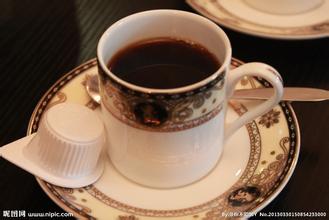The planting technology of coffee the planting environment introduces which country is the most suitable for growing coffee
Field management of loosening soil and weeding: when the seedling height is 3cm to 6cm, the weak or overdense seedlings are pulled out; when the seedling height is 10cm and 13cm, the plant distance is about 30cm. Soil loosening and weeding were carried out at the same time between seedlings and fixed seedlings to keep the soil loose. Coffee beans are relatively drought-tolerant, and the soil can grow normally under general moisture. During drought, proper watering is appropriate, but less watering should be given to squatting seedlings during the seedling setting period. When White Dew (early September), the fruit tends to mature and can be stopped watering. Topdressing: the seedling height is about 35 cm, before the plant is closed, the seedlings are applied 20 kg of superphosphate and 10 kg of ammonia sulfate, mixed between the rows, and then ploughed to cultivate the soil, the fertilizer is buried in the soil, and can prevent the plant from lodging. Fourth, the most common disease of coffee bean is gray leaf spot, which is caused by a kind of half-known fungus in fungi, which mainly harms the leaves. At the beginning, a light brown spot appeared in the middle of the leaf, and then a gray mildew was produced on the spot. Before or at the initial stage of the disease, 65% Dysen zinc solution 500 times or 800 times 1000 times was sprayed to remove and treat. Insect pests mostly occurred in late spring and early summer, mainly aphids, sprayed with dimethoate emulsion into 200 times solution. Fifth, harvest, processing and storage of coffee beans gradually mature when the Autumn Equinox (late September), and begin to harvest when the pods turn red. Coffee beans should be stored in a ventilated, dry and cool place, pay attention to moistureproof and rodent damage coffee planting techniques 1, growth habits of coffee like warm, drought-resistant, cold-resistant, afraid of frost damage, seedlings and adult plants are vulnerable to frost defoliation to death, seeds can not mature. Coffee is not strict on the land, idle land can also be planted, but with good drainage, deep soil, loose and fertile sandy soil is appropriate. Second, seed selection of planting techniques: before sowing, the germination rate of seeds should be tested. Specific method: divide the full seeds into several parts, number them in turn, take out 125 to 250 grams in each part and put them into corresponding numbered utensils, soak them in warm water for about 50 ℃ for one day and night, pour out the water, rinse it again with clean water, then cover it with a wet cloth to maintain humidity, sprout after three days, and select those with a bud rate of more than 85% as seeds. Soil preparation: in the selected plots, 2000-2500 kg of ring fertilizer and 25 kg of superphosphate are applied per mu, which are evenly scattered on the ground, ploughed and raked fine and leveled, and generally do not make beds. If a bed is made, it can be made into a flat bed 1.2 to 1.5 meters wide. Sowing: soak the superior seeds selected by the test in 50 ℃ warm water for one day and night, wait for them to absorb water to expand, fish out the dry surface, and sow seeds. The sowing time is from Qingming Festival to Grain Rain (mid-April), when the air temperature is 15-20 ℃, it is too early, the ground temperature is low, the seeds are easy to rot in the soil, and too late, the seeds can not mature, affecting the yield and quality. Sowing with strip sowing is appropriate, row spacing 50-70 cm, open 5-6 cm deep ditch, spread seeds evenly in the ditch, cover soil 3 cm, slightly suppress, and emerge about 10 days after sowing. If there is a drought in the north, it is necessary to irrigate before sowing, not to water after sowing, so as not to affect the emergence of seedlings due to topsoil consolidation.

Important Notice :
前街咖啡 FrontStreet Coffee has moved to new addredd:
FrontStreet Coffee Address: 315,Donghua East Road,GuangZhou
Tel:020 38364473
- Prev

Introduction of coffee roasting stage introduction of coffee roaster introduction of roasting degree of different coffee beans
To sum up, coffee roasting is a science. The age, density, hardness and moisture content of raw beans will affect the quality of roasted coffee. Even the relative humidity and temperature on the day of roasting should not ignore the coffee beans that have just been roasted. It is best to put them for 2-5 days, so that a large amount of carbon dioxide out of the coffee beans will be easier to drink. Hong Kong Coffee Club will choose one-way breathable valve aluminum foil.
- Next

The planting environment of coffee trees introduces which countries are the most suitable for growing coffee
The first flowering period of the coffee tree is about three years old. the white five-petal tube-shaped flowers are filled with a faint scent of jasmine and the inflorescences are arranged in dense clusters. Flowers wither after two or three days of blooming and begin to bear fruit after a few months. The fruit is a drupe with a diameter of about 1.5 cm, which is green at first, then turns yellow gradually, and turns red after ripening, which is very similar to cherries.
Related
- Beginners will see the "Coffee pull flower" guide!
- What is the difference between ice blog purified milk and ordinary milk coffee?
- Why is the Philippines the largest producer of crops in Liberia?
- For coffee extraction, should the fine powder be retained?
- How does extracted espresso fill pressed powder? How much strength does it take to press the powder?
- How to make jasmine cold extract coffee? Is the jasmine + latte good?
- Will this little toy really make the coffee taste better? How does Lily Drip affect coffee extraction?
- Will the action of slapping the filter cup also affect coffee extraction?
- What's the difference between powder-to-water ratio and powder-to-liquid ratio?
- What is the Ethiopian local species? What does it have to do with Heirloom native species?

